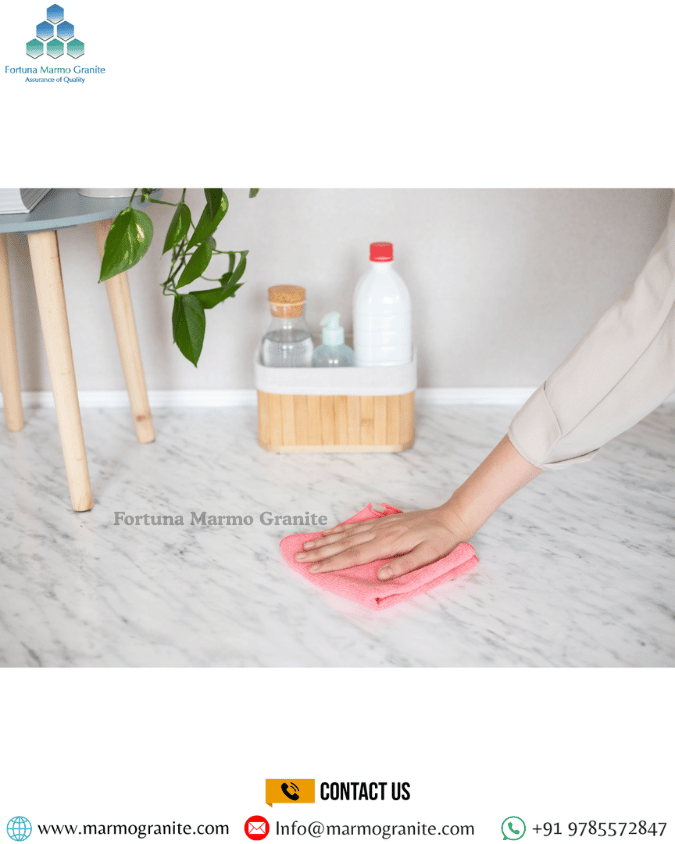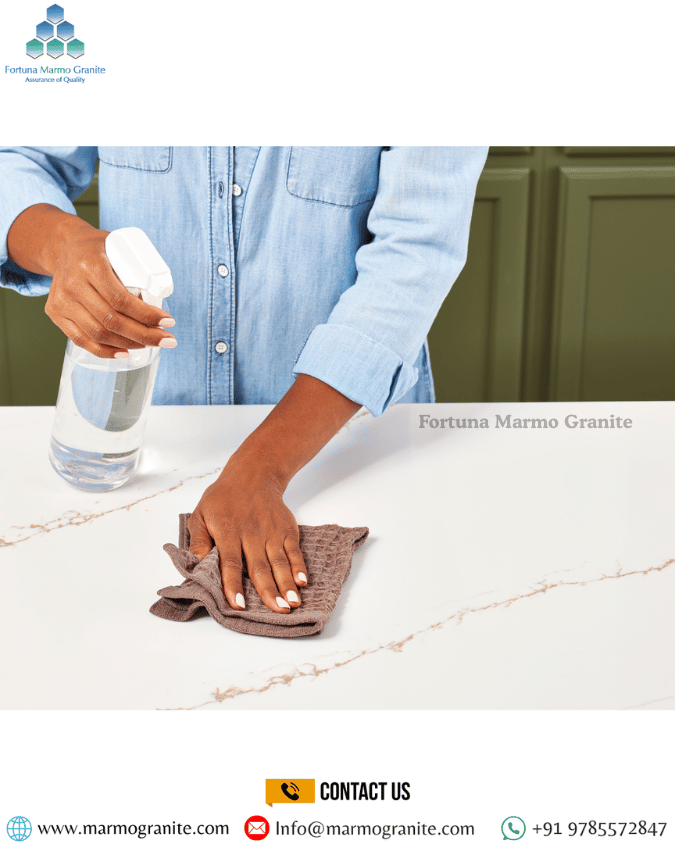How to Clean Marble Floors, Countertops, and Tiles at Home
Indian Marble Supplier Marble, a metamorphic rock composed mainly of calcite, has a crystalline structure that gives it beauty and delicacy. Its natural porosity adds charm but also makes it prone to absorbing liquids. Left untreated, this can lead to staining and etching.
Because of this, gentle and regular maintenance is essential. It preserves marble's integrity and extends its lifespan. Unlike many other surfaces, marble cannot tolerate harsh chemical cleaners or abrasive scrubbing. Acidic substances such as vinegar, lemon juice, or even common cleaners react with the calcium carbonate in marble. This reaction causes etching, which shows up as dull spots or rings.
Abrasive tools like steel wool or rough sponges can also scratch the polished surface. These scratches reduce its natural shine. The best care comes from quick spill cleanup, pH-neutral cleaning solutions, and soft cloths or mops. This careful approach keeps marble surfaces clean and protects their elegance. With proper care, they remain a luxurious focal point in your home for generations.


Cleaning Marble Floors: A Step-by-Step Guide
Daily/Every Other Day:
- Dust Mop or Vacuum: Moreover, Use a clean, dry dust mop or a vacuum cleaner with a soft brush attachment. This removes loose dirt, dust, and grit that can scratch the marble when walked upon.
- Prompt Spill Cleanup: In addition, Immediately wipe up any spills with a soft cloth and warm water. For sticky spills, a drop of pH-neutral dish soap can be used, followed by rinsing with clean water and drying.
Weekly/Bi-Weekly:
- Prepare Your Solution: Moreover, Fill a bucket with warm water. Add a few drops of pH-neutral dish soap to create a very mild, sudsy solution. Alternatively, use a marble-specific floor cleaner according to the manufacturer's instructions.
- Damp Mop: In addition, Dip a microfiber mop or soft cloth into the solution, wring it out thoroughly until it's just damp. You want to avoid saturating the floor.
- Mop in Sections: Consequently, Mop the floor in small sections, rinsing the mop frequently in clean water to prevent spreading dirt.
- Rinse (Important!): Ultimately, After cleaning a section with the soapy water, go over it again with a clean mop dampened with only plain warm water. This removes any soap residue that could dull the marble.
Cleaning Marble Countertops: Maintaining Kitchen and Bathroom Beauty
Daily/After Each Use:
- Wipe Down Immediately: Moreover, After cooking or using the bathroom, wipe down your marble countertops with a soft cloth dampened with warm water.
- Prompt Spill Cleanup: In addition, This cannot be stressed enough for countertops. Immediately blot (don't wipe) any spills, especially acidic ones like juice, wine, coffee, or oil.
- Gentle Soap (if needed): Yet, For sticky or greasy residue, add a tiny drop of pH-neutral dish soap to your damp cloth.
- Rinse and Dry: Moreover, Always rinse the area with clean water and dry thoroughly with a soft cloth to prevent water spots.
Weekly/Bi-Weekly:
- Dust and Wipe: Moreover, Remove all items from the countertop. Dust with a dry microfiber cloth.
- Clean with Marble Cleaner: In addition, Spray a specialized marble cleaner onto a soft cloth and wipe down the entire surface. Work in small sections.
- Buff Dry: Yet, Use a clean, dry chamois cloth or microfiber towel to buff the countertop to a shine.
Cleaning Marble Tiles (Walls, Shower Enclosures): Sparkling Verticals
Regular Cleaning:
- Dust Regularly: For wall tiles, a quick dust with a dry microfiber cloth will prevent dirt buildup.
- Damp Wipe: Use a soft cloth dampened with warm water and a few drops of pH-neutral dish soap to wipe down the tiles.
- Rinse and Dry: Rinse with clean water and dry thoroughly to prevent water spots, especially in shower enclosures where hard water can leave residue.
- Grout Cleaning: For grout lines, use a soft-bristled brush with your mild soapy solution. Rinse well.
For Shower Enclosures:
Shower marble is exposed to constant moisture and soap scum.
- Squeegee After Each Use: Invest in a good quality squeegee and use it to remove water from the marble walls after every shower. This is the single most effective way to prevent soap scum and hard water stains.
- Weekly Deep Clean: Use a marble-safe shower cleaner or a dilute solution of pH-neutral dish soap and warm water. Apply with a soft sponge, paying attention to soap scum buildup.
- Rinse Thoroughly: Rinse with plenty of clean water.
- Dry: Again, dry completely to prevent water spots and mildew.
Long-Term Marble Care Tips
Use Coasters: Always place coasters under glasses, especially when serving drinks with alcohol or citrus.
Use Trivets or Hot Pads: Keep hot pots, pans, or styling tools off marble surfaces by placing them on trivets or pads.
Use Cutting Boards: Never chop food directly on marble countertops—always use a cutting board.
Wipe Spills Immediately: Clean up spills right away to prevent stains or damage.
Dust Regularly: Frequent dusting prevents grit and dirt from scratching marble floors.
Place Mats at Entrances: Entrance mats help trap dirt and debris before they reach your marble floors.
Conclusion
Maintaining the pristine beauty of your marble floors, countertops, and tiles is a commitment that truly pays off, enhancing the elegance and value of your home for years to come. In addition, How to Clean Marble Floors, As we've explored, the key lies in understanding marble's unique properties as a natural stone – its porosity and susceptibility to acidic substances – and applying gentle, consistent care. Yet, How to Clean Marble Floors, From daily dusting and prompt spill cleanup to using pH-neutral cleaners and occasional poultices for tougher stains, each step plays a vital role in preventing etching, dulling, and discoloration.
Moreover, Remember to always dry marble surfaces thoroughly after cleaning to avoid water spots, and consider sealing them periodically for an added layer of protection against absorption. Consequently, How to Clean Marble Floors, By integrating these practices into your regular home maintenance routine, you ensure that your marble retains its luxurious shine and timeless appeal. For those seeking to invest in exquisite marble and granite solutions, or for expert advice on their care and maintenance, Fortuna Marmo Granite stands as a trusted partner, offering a wide range of high-quality natural stones and unparalleled expertise to bring your vision to life.

